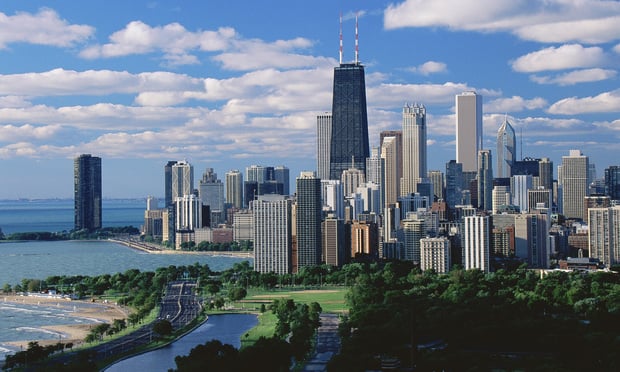Direct vacancy in the city's Central Business District has declined to 12.5%, from 13.3% in the third quarter, according to a market report from US Equities. "There has been over a million sf of net absorption, which is a very strong number," Euston says.
There has been "seven straight quarters of positive absorption" in the CBD, says Mark Buth, senior vice president and managing director of leasing with MB Real Estate. The amount of absorption has been decreasing slightly each quarter from about 770,000 sf in the first quarter of this year. Buth is expecting between 400,000 sf and 500,000 sf of absorption in the fourth quarter. An expected 2.4 million sf of absorption is expected for the year, which is stronger than the more than 2.1 million sf of absorption in 2006, Buth says. Rental rates are increasing and are expected to go up until several new office buildings under construction are completed, Buth says.
By the end of 2009, more than 4.4 million sf of new space is expected to come online. Buildings are under construction at 108 N. State St., 111 W. Illinois St., 300 N. LaSalle St., 353 N. Clark St. and 155 N. Wacker Dr. More than 53% of the space is currently pre-leased with the amount expected to increase in the fourth quarter, Euston says. Boston Consulting Group is expected to sign a lease at 300 N. LaSalle, Euston tells GlobeSt.com. As the buildings near completion, they will likely be 75% leased, he says.
As anchor tenants of existing CBD building's move into the new space, landlords of existing buildings will have large chunks of space to re-lease. For example, "It is most likely that Marsh McLennan will not renew in 10 S. Wacker or 500 W. Monroe," Euston tells GlobeSt.com. When Marsh McLennan leaves, there will be a combined amount of 365,000 sf of vacant space in those two buildings, he says. The asking lease rate for 10 S. Wacker and 500 W. Monroe are currently $28 per sf, net "which is as much as what the developers of the new buildings are asking for their available space," Euston says. Landlords of existing Class A buildings will not be able to continue to charge the high rents they expected to receive when they acquired the buildings at high prices, Euston says. "We should see some downward pressure on rental rates," he says. The vacancy rate is expected to increase as it did from about 5% in 1999 to about 15% in 2005 after new office space starting hitting the market in 2000, Buth says.
The vacancy for the suburban submarkets increased up to 17%, from 16.2% in the second quarter. The suburban submarkets, particularly the Northwest submarket saw an increase in vacancy from the effect of the residential mortgage crisis, with companies such as Ameriquest downsizing, says David Burkards, an assistant VP with MB Real Estate. Companies are also leaving the suburbs for the city, such as United Airlines, which is moving to 77 W. Wacker and consolidating operations in Elk Grove Township, and the Warranty Group, which is relocating from Glenview, IL, Burkards says. BP is considering moving downtown as well, to a newly planned development in the West Loop, Burkards tells GlobeSt.com.
By the end of the third quarter, there were 67 large blocks of available space in the suburban submarkets with a total of nearly 6.9 million sf. The 504,000-sf Allstate Campus at 51 W. Higgins Rd. in Sought Barrington, IL is currently up for sale, as reported by GlobeSt.com, and was added to the list. A tenant that could occupy more than 500,000 sf is likely to have a building constructed or move into a newly constructed building as opposed to move into a building such as the Allstate Campus, Burkards says. With the high quantity of large blocks available, the suburban submarkets are at risk for continued soft market conditions, he says.
© Touchpoint Markets, All Rights Reserved. Request academic re-use from www.copyright.com. All other uses, submit a request to [email protected]. For more inforrmation visit Asset & Logo Licensing.






